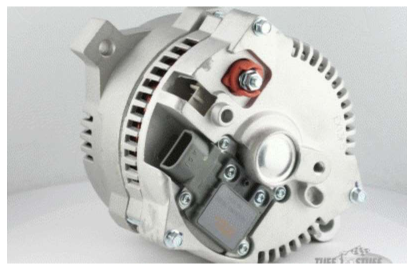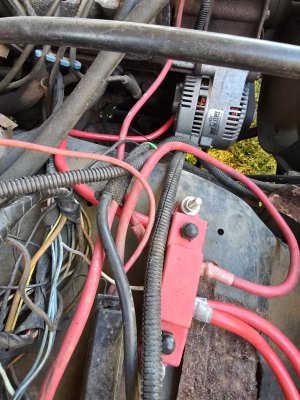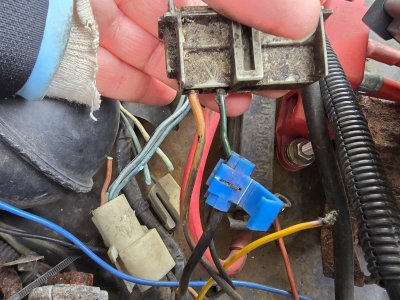ledzilla
Active member
So, yes, looks like I have yet another alternator issue. I've had a few issues where I'd come out to my Bronco, but there wasn't enough juice in the battery for it to start. I ended up swapping batteries a couple times in the last month or so from the local junkyard (one battery wouldn't hold a charge at all). I was thinking that I had some sort of weird parasitic draw even though the only pull on the battery when not running was the radio's memory circuit (verified to be 0.3A draw when the battery connects and then reduces to below what my meter could read after several seconds, so less than 0.01A). So that wasn't the case. Then I noticed the last two times this occurred, I had driven some distance from home. I headed out in segmented runs, making stops and getting further. But it was just one straight shot home each time. No issues encountered while out and about, only after getting home and trying to start the Bronco again later on. The return journeys were all more than 30 minutes of driving with highway driving or travel on roads near highway speeds. On one of these drives, getting near home, I noticed the instrument cluster looked relatively dim and I tried fiddling with the dimmer switch, but it didn't help. Makes me think it was all running on reduced alternator output.
So, I'm of the mind that the alternator is the problem, but as with most things I don't think it has more than a one year length on the warranty. But assuming that it's not a quality issue with the alternator itself, could there be something else going on under the hood that could cause such an issue on longer drives like this? Maybe too much heat, something pulling an unexpectedly high draw on the alternator? Just want some things to look at before I try looking into replacing the alternator. I don't want to replace it only to have the same issue come back again.
So, I'm of the mind that the alternator is the problem, but as with most things I don't think it has more than a one year length on the warranty. But assuming that it's not a quality issue with the alternator itself, could there be something else going on under the hood that could cause such an issue on longer drives like this? Maybe too much heat, something pulling an unexpectedly high draw on the alternator? Just want some things to look at before I try looking into replacing the alternator. I don't want to replace it only to have the same issue come back again.



